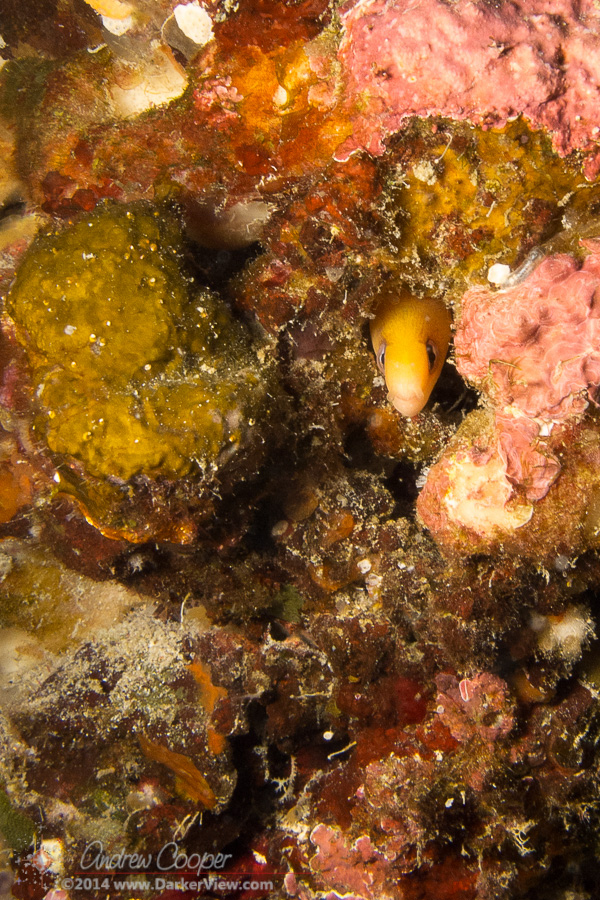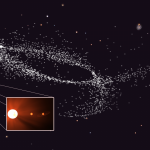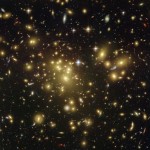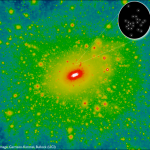
Tag: dwarf
Dwarf Moray and Sponge
Ancient Worlds from Another Galaxy Discovered Next Door
W. M. Keck Observatory press release…
An international team of scientists, led by astronomers at Queen Mary University of London, report of two new planets orbiting Kapteyn’s star, one of the oldest stars found near the Sun. One of the newly-discovered planets could be ripe for life as it orbits at the right distance to the star to allow liquid water on its surface. The paper is being published by the Monthly Notices of the Royal Astronomical Society on June 4.

The astronomers used new data from the 3.6 meter La Silla Observatory in Chile to measure tiny periodic changes in the motion of the star, and followed up with two more high-precision spectrometers to secure the detection: W. M. Keck Observatory’s HIRES instrument installed on the 10-meter Keck I telescope on the summit of Mauna Kea, and PFS at the 6.5 meter Las Campanas Observatory in Chile.
Using the Doppler Effect, which shifts the star’s light spectrum depending on its velocity, the scientists can work out some properties of these planets, such as their masses and periods of orbit.
Continue reading “Ancient Worlds from Another Galaxy Discovered Next Door”
Hubble and Keck Unveil a Deep Sea of Small and Faint Early Galaxies
W. M. Keck Observatory press release…
A team of scientists led by astronomers at the University of California, Riverside has used NASA’s Hubble Space Telescope and the W. M. Keck Observatory to uncover the long-suspected underlying population of galaxies that produced the bulk of new stars during the universe’s early years.

Study results appear in the Jan. 10 issue of The Astrophysical Journal, and will be presented today (Jan. 7) at the 223rd meeting of the American Astronomical Society in Washington DC.
The 58 young, diminutive galaxies spied by Hubble were photographed as they appeared more than 10 billion years ago, during the heyday of star birth.
Continue reading “Hubble and Keck Unveil a Deep Sea of Small and Faint Early Galaxies”
UCI Scientists Size Up Universe’s Most Lightweight Dwarf Galaxy with Keck Observatory
W. M. Keck Observatory press release…
The least massive galaxy in the known universe has been measured by UC Irvine scientists, clocking in at just 1,000 or so stars with a bit of dark matter holding them together.

“Finding a galaxy as tiny as Segue 2 is like discovering an elephant smaller than a mouse,” said UC Irvine cosmologist James Bullock, co-author of the paper. Astronomers have been searching for years for this type of dwarf galaxy, long predicted to be swarming around the Milky Way. Their inability to find any, he said, “has been a major puzzle, suggesting that perhaps our theoretical understanding of structure formation in the universe was flawed in a serious way.”
A Vast Rotating Disk of Dwarf Galaxies Surrounding the Andromeda Galaxy
W. M. Keck Observatory press release…
Astronomers using the Canada-France-Hawaii and W. M. Keck Observatory telescopes on the summit of Mauna Kea, Hawaii have been amazed to find a group of dwarf galaxies moving in unison in the vicinity of the Andromeda Galaxy. The structure of these small galaxies lies in a plane, analogous to the planets of the Solar System. Unexpectedly, they orbit the much larger Andromeda galaxy en masse, presenting a serious challenge to our ideas for the formation and evolution of all galaxies.
The findings are being reported on the cover the upcoming issue of the journal, Nature.
While Persian astronomers were the first to catalogue the Andromeda galaxy, only in the last five years that we have studied in exquisite detail the most distant suburbs of the Andromeda galaxy via the Pan-Andromeda Archaeological Survey (PAndAS), undertaken with the Canada-France-Hawaii Telescope and measured with the Keck Observatory, providing our first panoramic view of our closest large companion in the cosmos.
The study culminates many years of effort by an international team of scientists who have discovered a large number of the satellite galaxies, developed new techniques to measure their distances, and have used the Keck Observatory with colleagues to measure their radial velocities, or Doppler shifts (the speed of the galaxy relative to the Sun). While earlier work had hinted at the existence of this structure, the new study has demonstrated its existence to a high level of statistical confidence (99.998%).
Continue reading “A Vast Rotating Disk of Dwarf Galaxies Surrounding the Andromeda Galaxy”
Most Distant Dwarf Galaxy Detected
W. M. Keck Observatory Press Release…
Scientists have long struggled to detect the dim dwarf galaxies that orbit our own galaxy. So it came as a surprise on Jan. 18 when a team of astronomers using Keck II telescope’s adaptive optics has announced the discovery of a dwarf galaxy halfway across the universe.
The new dwarf galaxy found by MIT’s Dr. Simona Vegetti and colleagues is a satellite of an elliptical galaxy almost 10 billion light-years away from Earth. The team detected it by studying how the massive elliptical galaxy, called JVAS B1938 + 666, serves as a gravitational lens for light from an even more distant galaxy directly behind it. Their discovery was published in the Jan. 18 online edition of the journal Nature.

